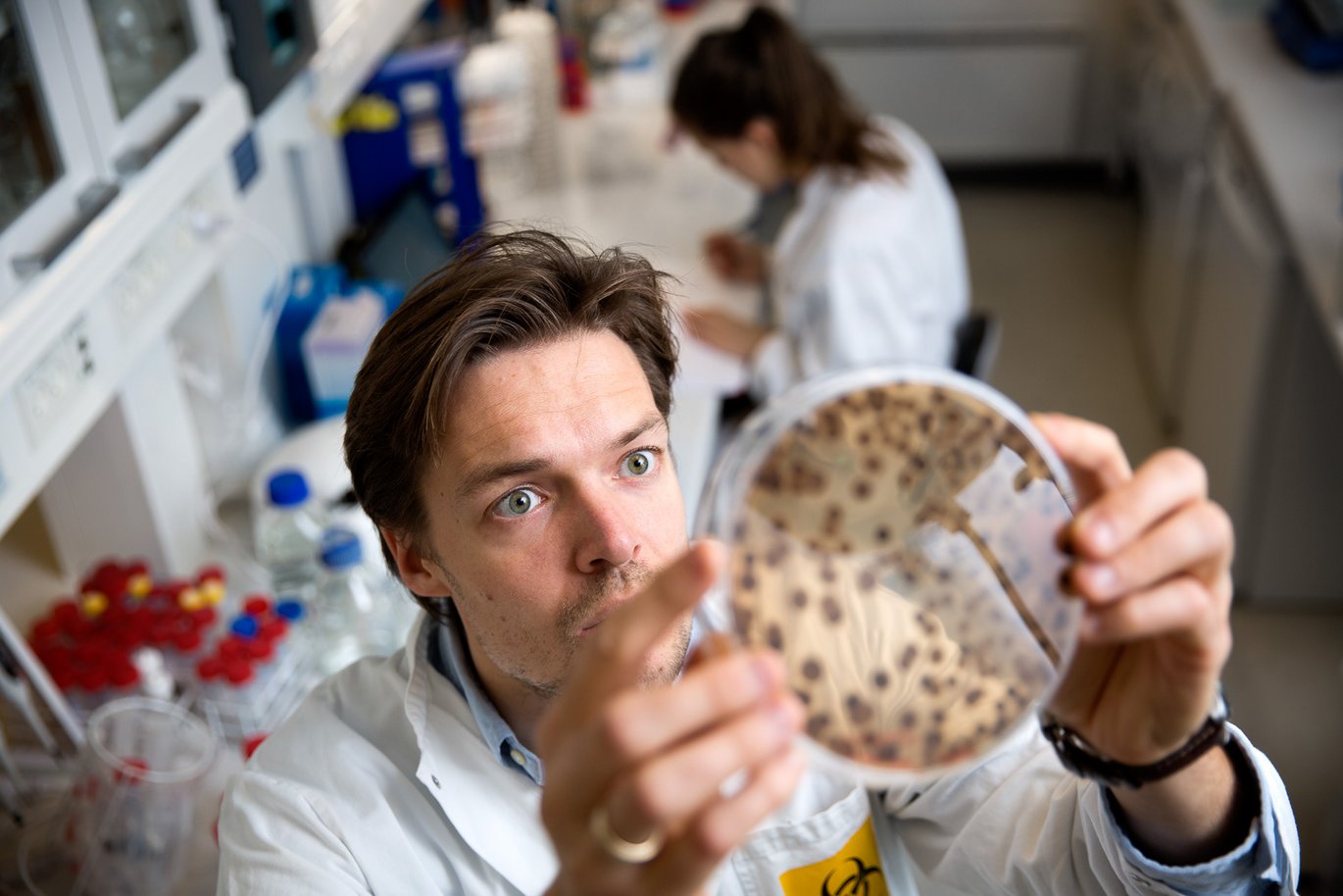Researcher suffocates bacteria in search of new medicine
When this specific bacteria is denied oxygen, it produces new substances. Substances that have the potential to be used in cancer treatments or fighting infections.

In 2017, Thomas Tørring received a new bacteria in his laboratory. The bacteria, Micromonospora, had been found at the bottom of the Mediterranean Sea, and not a lot was known about it.
Together with his colleagues, he began studying the bacteria to find out if it could be used to produce new and interesting molecules. Molecules that can be used for medical treatment.
The team quickly discovered that the bacteria was able to produce one particular substance that can be useful both as cancer treatment and a remedy for infections.
But when they tried to get the bacteria to produce more of the substance, in order to examine it more closely, it varied from experiment to experiment how much was produced. No matter what they did, it seemed more or less random.
"Once we had to cultivate 12-14 liters of bacteria just to get a single milligram of the substance. In another experiment, it took much less. We simply couldn't figure out why the bacteria reacted as it did," says Thomas Tørring.
Suffocated the bacteria by accident
Frustrated, Thomas Tørring and his colleagues kept trying, but they couldn't figure out what was at stake. The bacteria seemed to live by its own rules.
Then one day a thought struck them: Maybe it was the amount of oxygen in the bottle that controlled the production of the substance.
"When we examine bacteria, we cultivate them in bottles filled with nutrients, which gives the bacteria the best conditions for growth. But those conditions are in no way similar to the environment in which the bacteria live naturally," says Thomas Tørring and continues:
"It dawned on us that we had accidentally let in less oxygen to the bacteria in some of the experiments – and it was in exactly those cases the bacteria produced the most of the substance."
By systematically suffocating the bacteria in the bottles, they got a grip of the process and could begin to produce larger quantities of the substance. But the discovery also gave them an idea: Would other bacteria also produce new substances if they’re suffocated?

A huge, unexploited potential
When you go to the pharmacy and buy medicine, a large proportion of the active substances in the pills, injections, or drops come from bacteria.
Bacterial production is an effective and inexpensive way to produce the substances, and many pharmaceutical companies have large bacterial tanks, pumping out the substances they need.
But in fact, we only exploit a small part of the potential that the bacteria hold, says Thomas Tørring.
"We know from analyzes of the genomes of different bacteria that they produce only 5-10 percent of the different molecules, that their genes enable them to. The big question is how we motivate them to create all the other molecules in their arsenal," he says.
One way to wring new molecules out of bacteria seems to be to suffocate them. And that actually makes sense when you think about it, says Thomas Tørring.
"Micromonospora, which we work with, lives naturally on the seabed. Down there, the level of oxygen varies. If, for example, there are many other microorganisms, the oxygen is quickly used up."
"Maybe the bacteria needs a competitive edge when there is limited oxygen, and to gain that it produces this molecule. The molecule kills other bacteria, and what's more, the substance also works much more effectively when there is little oxygen."
Could serve as a model
Last week, Thomas Tørring received just over 3 million kroner from the Independent Research Fund Denmark to continue his experiments.
Contrary to what one might think, he is not so interested in the particular substance that the bacteria spits out, but more in understanding why and how it does it.
"If we gain a better understanding of what happens at a molecular level inside the bacteria, we can use that knowledge to predict how we can trick other bacteria into producing new substances."
"This way, our bacteria will work as a model organism. We hope that we can help unlock the enormous untapped potential in the bacteria that we currently use to produce medicine for us."
Six projects at Tech have received funding
Thomas Tørring's project, "Unlocking new chemical space for drug discovery: Specialized Metabolism triggered under oxygen-limited conditions," has received 3,143,231 Danish kroner from the Independent Research Fund Denmark.
His project is one of six at the Faculty of Technical Sciences that has recently received funding from the Independent Research Fund Denmark.
Here is a list of the other projects:
- Lars Vabbersgaard Andersen: A novel grouped anchor concept for floating offshore wind turbines (3.167.070 kroner)
- Eusun Han: RootVision: Illuminating root diversity under crop mixtures (3.157.344 kroner)
- Min Wu: Leveraging massive alkaline solid wastes: Biocement by carbonic anhydrase mediated CO2 mineralization (3.167.990 kroner)
- Ramin Aghababaei: A novel ML-enhanced scratch-based material characterization technique (SCRACH) (3.166.489 kroner)
- Pedro Neves de Carvalho: Innovative Green Solutions: Sludge-Derived Fertilizers Free from PFAS and Antibiotics (FERTIPAS) (3.167.194 kroner)
Contact
Associate Professor Thomas Tørring
Aarhus University, Department of Biological and Chemical Engineering
Mail: thomast@bce.au.dk
